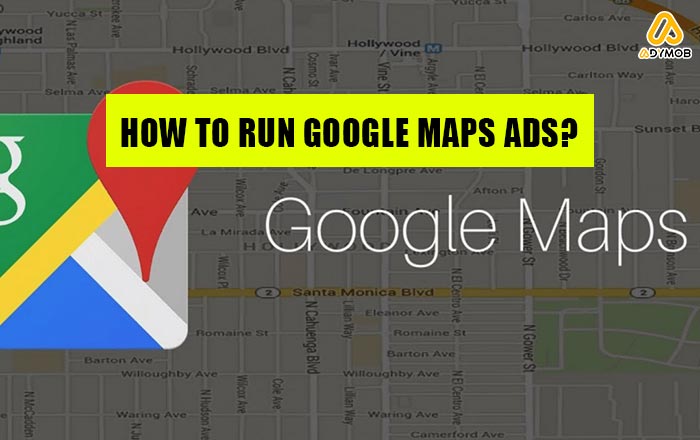Have you tried searching for an excellent spot like a restaurant, café, or digital store on Google Maps? Have you ever wondered how these places magically pop up on the map?
The platform automatically displays the nearest options when you search for a location or seek out a business on Google Maps.
Some companies use Google Maps ads to display their businesses to individuals searching for a specific place.
For instance, if you are looking for the nearest beauty salon, Google Maps will present you with options from businesses that have opted to run Google Maps ads for their establishments.
Now, if you think, “Hey, I want to do this for my own business!” No worries! In this article, we are here to guide you on how to run Google Maps ads for your business.
What are Google Maps ads & how do they work?
Google Maps ads are a powerful tool for your businesses if you are looking to enhance your visibility in a virtual mapping world.
These ads allow you to promote your products or services directly within the Google Maps app, providing a strategic way to connect with potential customers actively searching for specific locations or businesses.
So, how do Google Maps ads work? It is a fascinating process that combines location data with user intent.
When a user searches for a particular place or type of business on Google Maps, the platform uses an algorithm to display relevant results based on the user’s location and search history. This is where Google Maps ads come into play!
Businesses can use Google Ads to create location-based campaigns targeting users in specific geographic areas.
These campaigns can include various ad formats, such as promoted pins, which make a business stand out on the map, or local search ads that appear at the top of relevant search results.
The goal is to catch the user’s attention when looking for something nearby.

How to run Google Maps ads for a business? (A step-by-step guide)
As mentioned, running Google Maps ads for your business can significantly boost your visibility and attract local customers.
![]() So, why are you hesitating? Follow the steps below to set up Google Maps ads for your business: Top of Form.
So, why are you hesitating? Follow the steps below to set up Google Maps ads for your business: Top of Form.
· Step 1: Create a Google Ads account
Start by setting up a Google ads account if you already have one. This will serve as the platform for managing and launching your Google Maps ads.
· Step 2: Link your Google My Business account
Ensure that your business is listed on Google My Business. Connecting your Google Ads account to your Google My Business profile is crucial for running location-based ads on Google Maps.
· Step 3: Set up location extensions
Activate location extensions within your Google ads account. This feature lets you display essential business information directly on the ad, including your address, phone number, and business hours.
· Step 4: Create a campaign
Initiate a new campaign within your Google ads account. Opt for the “Local Campaign” option, specifically designed to drive traffic to your physical store or business location.
· Step 5: Define your target audience
Determine your target audience by specifying the geographic areas you want to target. Google Maps ads enable you to reach users within a certain radius of your business, ensuring you connect with the right local audience.
· Step 6: Design engaging ad creative
Create compelling ad creative highlighting your unique selling propositions and encouraging users to visit your business. Utilize eye-catching visuals, a concise yet informative message, and a persuasive call to action.
· Step 7: Select ad formats
Choose the ad formats that align with your campaign goals. Promoted pins, local search ads, and in-store promotions are popular options that can effectively capture the attention of potential customers on Google Maps.
· Step 8: Monitor & optimize
Once your campaign is live, regularly monitor its performance through the Google ads dashboard. Analyze key metrics such as click-through, conversion, and user engagement. Use these insights to optimize your campaign for better results.

Advantages of advertising on Google Maps
If you are still trying to decide whether to run it for your business, we would like to describe some advantages of running Google Maps ads below Top of Form.
· Local Targeting
As mentioned earlier, Google Maps ads allow you to target a local audience effectively. With location-based targeting, businesses can reach users in specific geographic areas, ensuring their advertising efforts focus on the most relevant and potential customer base.
· Increased visibility
Promoted pins and local search ads on Google Maps help you stand out. These features make it easier for users to spot your business when searching for relevant services or products, increasing the likelihood of attracting local customers.
· Direct engagement
Google Maps ads provide users with direct access to essential information about your business, such as contact details, store hours, and directions. This direct engagement encourages users to take immediate action, whether visiting your store or contacting your business.
· Mobile Accessibility
As a mobile-centric platform, Google Maps ads reach smartphone users and mobile devices. This is particularly advantageous as more people use mobile devices to search for local businesses while on the go.
· Performance tracking
Google Ads provides comprehensive analytics tools that allow you to track the performance of your Google Maps ads. This includes insights into click-through rates, impressions, and conversions, enabling businesses to refine their strategies for optimal results.
Let’s conclude
In conclusion, Google Maps ads offer an innovative approach for businesses to enhance their visibility by seamlessly integrating location data and user intent.
This provides a powerful platform for all types of shops to showcase their stores to a broader audience through a straightforward method.
Have you ever compared the cost of advertising on social media platforms with Google Maps ads? Which is more beneficial for businesses looking to introduce their stores to people?
Now that you have learned how to run Google Maps ads, which method do you find easier for advertising? Share your experiences and insights in the comments below!


